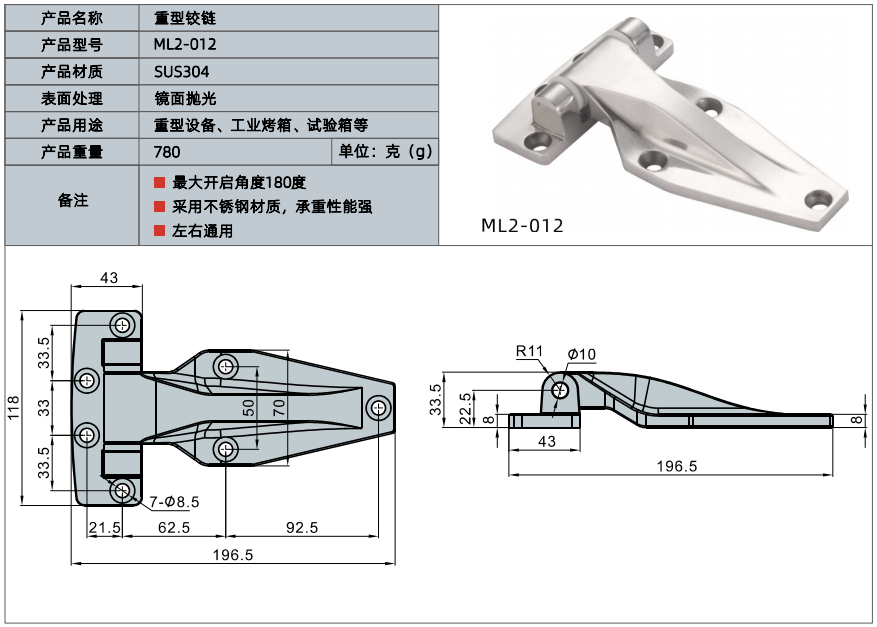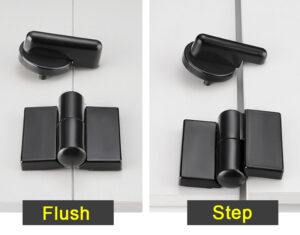Weathering test chamber hinges are a critical component of testing equipment used in the industrial manufacturing field. These hinges are responsible for providing the necessary support and stability required to withstand the harsh environmental conditions of weathering tests. Choosing the right hinges for these tests is crucial, as it can greatly impact the accuracy and reliability of the results. In this article, we will provide a comprehensive guide on how to choose the right weathering test chamber hinges.
Understanding Weathering Test Chamber Hinges
Weathering test chamber hinges are designed to withstand the harsh conditions of weathering tests. These tests simulate the effects of outdoor exposure on materials, such as sunlight, rain, and temperature fluctuations. Hinges are critical to the proper functioning of weathering test chambers, as they allow for the opening and closing of the chamber doors. There are several types of weathering test chamber hinges available, including butt hinges, continuous hinges, piano hinges, strap hinges, and specialized hinge options.
When selecting hinges, it’s important to consider the materials they are made from. Stainless steel hinges are commonly used in weathering test chambers due to their durability and resistance to rust and corrosion. Brass hinges are also a popular choice due to their strength and aesthetic appeal. Aluminum hinges are lightweight and cost-effective, making them an ideal option for smaller weathering test chambers.

Factors to Consider When Choosing Hinges
When selecting weathering test chamber hinges, several factors must be considered. These include the environmental conditions for testing, the types of materials being tested, the frequency of testing, load capacity requirements, and cost considerations.
Environmental conditions for testing can greatly impact the choice of hinges. For example, testing in a humid environment may require hinges that are more resistant to corrosion. The type of material being tested can also influence the selection of hinges, as certain materials may require more frequent testing or longer testing times. Load capacity is another important consideration, as hinges must be able to support the weight of the test materials and the chamber doors.
Choosing the Right Material
When it comes to selecting the material for your weathering test chamber hinges, there are a few options to consider. Each material has its own unique set of benefits and drawbacks that can impact the overall performance and longevity of your hinges.
Stainless steel industrial hinges are a popular choice for weathering test chambers due to their durability and resistance to corrosion. They are also relatively easy to maintain and can withstand harsh environmental conditions. However, stainless steel hinges can be more expensive compared to other materials and may not be necessary for all testing applications.
Brass hinges are another option to consider for weathering test chambers. They are known for their attractive appearance and are often used in applications where aesthetics are important. Brass hinges are also highly resistant to corrosion and can provide reliable performance over time. However, they may not be as durable as stainless steel hinges and can be prone to tarnishing over time.
Aluminum hinges are a lightweight and affordable option for weathering test chambers. They offer good corrosion resistance and can be an excellent choice for applications where weight is a consideration. However, aluminum hinges may not be as durable as stainless steel or brass hinges and may not be suitable for all testing conditions.
Other material options for weathering test chamber hinges include plastic and nylon. These materials are often used for their low cost and ease of manufacture. However, they may not be suitable for all testing conditions and may not provide the same level of durability as metal hinges.
It’s important to carefully consider the specific requirements of your testing application when choosing the material for your weathering test chamber hinges. Be sure to weigh the pros and cons of each material option before making a final decision.

Load Capacity and Weight Considerations
When selecting weathering test chamber hinges, it’s important to understand load capacity and weight considerations. Load capacity refers to the amount of weight a hinge can support before failing. This is an important consideration, particularly if you will be testing heavy or bulky items.
Choosing the appropriate load capacity for your needs is essential to ensuring the hinges can handle the weight of the items being tested. It’s important to keep in mind that selecting a hinge with a load capacity that is too low can result in hinge failure and potential damage to your test equipment.
In addition to load capacity, weight considerations are also important when selecting weathering test chamber hinges. The weight of the hinges themselves can impact the overall weight of your testing equipment, which may be a consideration if you will be moving the equipment around frequently.
Types of Weathering Test Chamber Hinge Configurations
There are several different hinge configurations to consider for weathering test chambers. Each configuration has its own set of benefits and drawbacks, depending on the specific needs of your application.
Butt hinges are a common hinge configuration used for weathering test chambers. They are simple and easy to install, making them a popular choice for many applications. Butt hinges can also provide reliable performance over time and are relatively low cost.
Continuous hinges, also known as piano hinges, are another option to consider for weathering test chambers. They are made up of a long strip of metal that runs the entire length of the door and frame. Continuous hinges can provide a high level of durability and strength, making them a good choice for heavy-duty testing applications.
Strap hinges are another option to consider for weathering test chambers. They are commonly used for larger doors and can provide reliable performance over time. However, they may not be suitable for all testing applications and may require additional maintenance over time.
Specialized hinge options are also available for weathering test chambers. Including concealed hinges, adjustable hinges, and self-closing hinges. These options can provide additional functionality and performance benefits, depending on the specific needs of your application.

Weathering Test Chamber Hinge Installation
Proper installation techniques are crucial for ensuring that weathering test chamber hinges to function properly and last a long time. The hinges should be installed in a way that ensures proper alignment and minimizes stress on the hinge and door or panel.
Common installation mistakes include misaligning the hinges, over-tightening or under-tightening the screws, and failing to use appropriate hardware or anchors. These mistakes can lead to premature hinge failure and damage to the test chamber.
Maintenance and Upkeep
Regular cleaning and inspection of weathering test chamber hinges are important to ensure their proper functioning and longevity. Hinges should be cleaned with mild detergent and water. Then dried thoroughly to prevent rust and corrosion.
Lubrication requirements should also be considered when maintaining weathering test chamber hinges. Lubricating the hinges with a silicone or graphite-based lubricant can help prevent rust and corrosion, as well as reduce friction and noise.
Common Weathering Test Chamber Hinge Problems
-
Misalignment
Misalignment is a common issue that can cause weathering test chamber hinges to malfunction. Misaligned hinges can cause excessive wear and tear. Leading to the failure of the hinge mechanism. To avoid misalignment issues, it is important to ensure that the hinges are installed correctly and that they are properly aligned. If you notice any misalignment, it is recommended that you address the issue promptly to prevent any further damage.
-
Rust and Corrosion
Rust and corrosion are also common problems that can affect weathering test chamber hinges, especially in environments where the air is humid or where there is exposure to saltwater or other corrosive substances. To avoid rust and corrosion, it is important to choose the right material for your hinges and to properly maintain them by cleaning them regularly and applying appropriate lubricants.
-
Worn or Damaged Hinges
Worn or damaged hinges can cause the weathering test chamber to malfunction, and can also pose a safety hazard. If you notice any signs of wear or damage, such as cracking, bending, or excessive rust. It is important to replace the hinges promptly to avoid any potential issues.
-
Addressing Common Hinge Problems
To address common weathering test chamber hinge problems, it is recommended that you perform regular maintenance and inspection of your hinges. This includes cleaning them regularly, applying lubricants as needed, and replacing any worn or damaged hinges promptly. It is also important to choose the right material and load capacity for your hinges and to properly install them to avoid misalignment issues.

Conclusion
In my personal experience, selecting the right weathering test chamber hinges is essential for ensuring the accuracy and reliability of weathering tests. By understanding the different types of hinges available, the factors to consider when choosing hinges. And the common problems that can occur with hinges, you can make an informed decision and choose the right hinges for your needs. By properly maintaining your hinges and addressing any issues promptly. You can ensure that your weathering test chamber continues to function properly and deliver accurate results.







